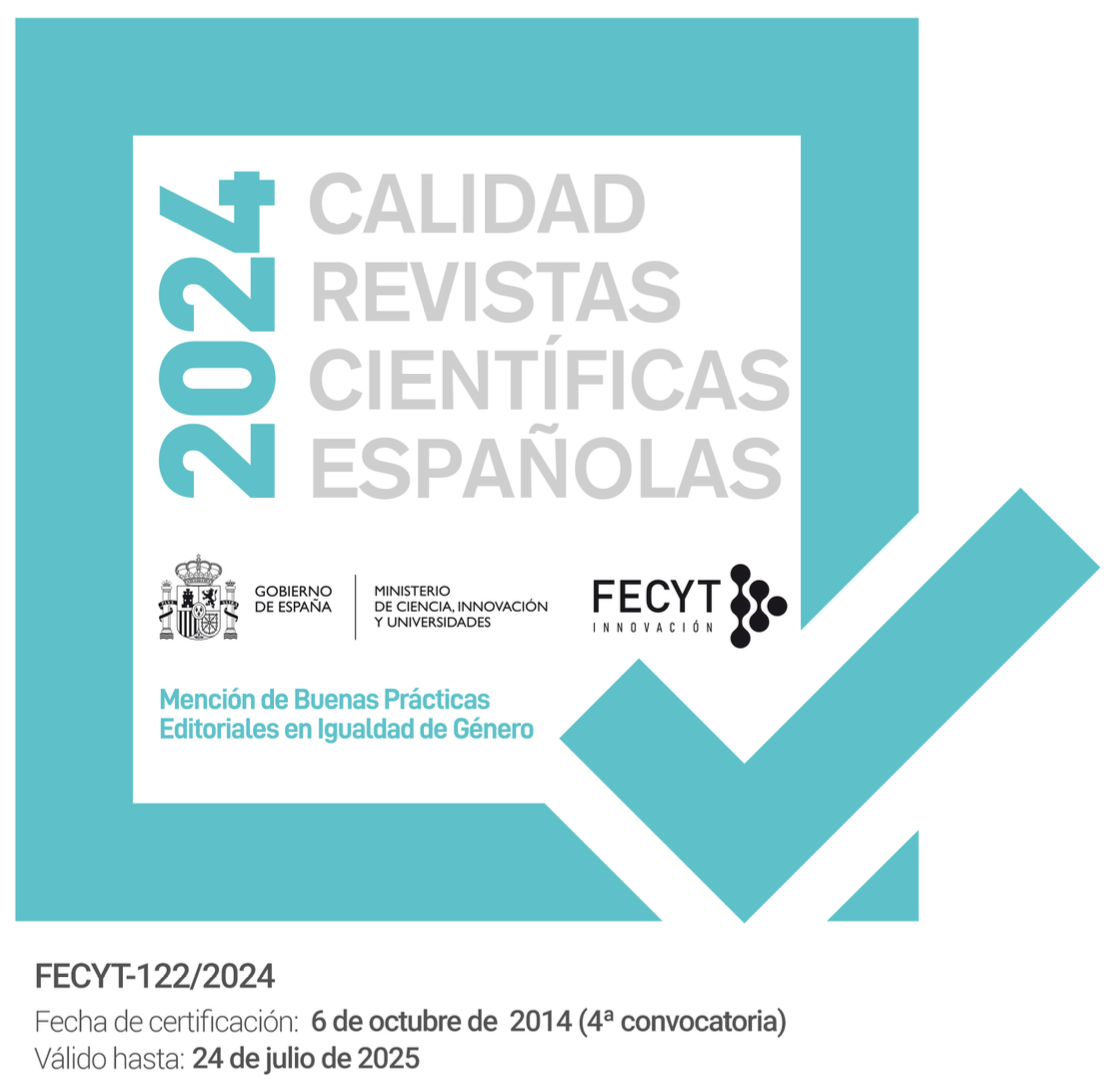Reorienting the Gaze: Monstrous Bodies in Remediations of Frankenstein
DOI:
https://doi.org/10.28914/Atlantis-2023-45.1.02Abstract
Visual adaptations of the Frankenstein myth highlight the role ocularcentrism and scopic power play. By engaging with the concept of the gaze, this paper analyzes remediations of Mary Shelley’s masterpiece and discusses how visual narratives frame potentially monstrous bodies in order to assimilate or question traditional privileged visions and their construction of otherness, as well as to (re) orient spectators towards recognition of or detachment from the onscreen monster. It will address particularly relevant examples: Edison’s Frankenstein, the YouTube series Frankenstein M.D., Whale’s and Branagh’s iconic remediations, as well as the less known Murders of the Rue Morgue and Frankenhooker. Ultimately, this work will vindicate the role of remediations as an arena within which contemporary imaginaries regarding otherness and who holds the visual and narrative power are either legitimized or challenged.
Downloads
References
Ahmed, Sara. 2006. “Orientations: Toward a Queer Phenomenology.” GLQ: A Journal of Lesbian and Gay Studies 12 (4): 543-74.
Aragay, Mireia, ed. 2005. Books in Motion. Adaptation, Intertextuality, Authorship. Amsterdam: Rodopi.
Borham-Puyal, Miriam. ed. 2018. Frankenstein Revisited: The Legacy of Mary Shelley’s Masterpiece. Salamanca: Ediciones Universidad de Salamanca.
—, 2019. “Jemima’s wrongs: Reading the female body in Mary Wollstonecraft’s prostitute biography.” International Journal of English Studies, 19 (1): 97-112.
—, 2020. Contemporary Rewritings of Liminal Women. Echoes of the Past. London and New York: Routledge.
Braidotti, Rosi. 1994. Nomadic Subjects: Embodiment and Sexual Difference in Contemporary Feminist Theory. New York: Columbia UP.
—, 2014. “Metamorphic Others and Nomadic Subjects.” ArtForum.com. [Accessed June 1, 2021].
Bronfen, Elizabeth. 1992. Over her Dead Body: Death, Femininity and the Aesthetic. Manchester: Manchester UP.
Branagh, Kenneth, dir. 1994. Mary Shelley’s Frankenstein. TriStar Pictures.
Buenza, Daniele Pio. 2018. “The Theme of the Doppelgänger in James Searle Dawley’s Frankenstein.” In Saggini and Soccio 2018, 173-86.
Casetti, Francesco. 2004. “Adaptation and Mis-adaptations. Film, Literature, and Social Discourses.” In Stam and Raengo 2004, 81-91.
Chase, Cynthia, ed. 1993. Romanticism. London: Routledge.
Davidoff, Leonore and Catherine Hall. 2002. Family Fortunes: Men and Women of the English Middle Class. 1780-1850. London: Routledge.
Ellis, Markman. 1996. The Politics of Sensibility: Race, Gender and Commerce in the Sentimental Novel. Cambridge: Cambridge UP.
Felski, Rita. 2008. Uses of Literature. Oxford: Blackwell.
Fisher, Terence, dir. 1957. The Curse of Frankenstein. Hammer Films.
Florey, Robert, dir. 1932. Murders in the Rue Morgue. Universal Pictures.
Gámez Fuentes, Mª José and Rebeca Maseda García. 2018. “The Configuration of Gender Violence. A Matrix to be Reloaded.” In Gámez and Maseda 2018, 1-18.
—, eds. 2018. Gender and Violence in Spanish Culture: From Vulnerability to Accountability. New York: Peter Lang.
Green, Martin. 1991. Seven Types of Adventure Tale: An Etiology of a Major Genre. University Park: Pennsylvania State UP.
Haraway, Donna. 1991. Simians, Cyborgs, and Women: The Reinvention of Nature. London: Routledge.
Hawley, Erin. 2015. “The Bride and Her Afterlife: Female Frankenstein Monsters on Page and Screen.” Literature/Film Quaterly 43 (3): 218-30.
Heffernan, James. 2012. “Looking at the Monster: Frankenstein and Film.” In Hunter 2012, 444-67.
Homans, Margaret. 1993. “Bearing Demons: Frankenstein and the Circumvention of Maternity.” In Chase 1993, 162-83.
Hunter, J. Paul, ed. 2012. Frankenstein. 2nd ed. New York: W.W. Norton.
Hutcheon, Linda. 2013. A Theory of Adaptation. 2nd ed. London and New York: Routledge.
Irigaray, Luce. 1985. This Sex Which is Not One. New York: Cornell UP.
Jay, Martin. 1994. Downcast Eyes: The Denigration of Vision in Twentieth-Century French Thought. Berkeley: U of California P.
Leitch, Thomas. 2007. Film Adaptation and Its Discontents. From Gone with the Wind to The Passion of the Christ. Baltimore, MD: The Johns Hopkins UP.
Liggins, Emma. 2000. “The Medical Gaze and the Female Corpse: Looking at bodies in Mary Shelley’s ‘Frankenstein’.” Studies in the Novel 32 (2): 129-46.
London, Bette. 2012. “Mary Shelley, Frankenstein, and the Spectacle of Masculinity.” In Hunter 2012, 391-403.
Morán-Sánchez, María. 2018. “Incorporating Popular Culture in Transmedia Storytelling: The Case of Frankenstein M.D.” In Borham-Puyal 2018, 65-79.
Mulvey, Laura. 1988. “Visual Pleasure and Narrative Cinema.” In Penley 1988, 57-68.
Norris, Farran. 2015. “Dr. Frankenstein’s Hideous Progeny: A Typology of the Mad Scientist in Contemporary Young Adult Novels and Computer Animated Film.” PhD diss., Illinois State University.
Pardo García, Pedro Javier. 2005. “Beyond Adaptation: Frankenstein’s Postmodern Progeny.” In Aragay 2005, 223-42.
Penley, Constance, ed. 1988. Feminism and Film Theory. London: Routledge.
Picart, Caroline. 2003. Remaking the Frankenstein Myth on Film: Between Laughter and Horror. Albany: SUNY Press.
Saggini, Francesca, and Anna Soccio, eds. 2018. Transmedia Creatures: Frankenstein’s Afterlives. Lewisburg, PA: Bucknell UP.
Searle Dawley, J, dir. 1910. Frankenstein. Edison Manufacturing Company.
Shelley, Mary. (1818) 2012. Frankenstein, or The Modern Prometheus. New York: W.W. Norton.
Stam, Robert. 2005. “Introduction: The Theory and Practice of Adaptation.” In Stam and Raengo 2005, 1-52.
— and Alessandra Raengo, eds. 2004. A Companion to Literature and Film. Malden, Oxford: Blackwell Publishing.
—, eds. 2005. Literature and Film. A Guide to the Theory and Practice of Film Adaptation. Malden, Oxford: Blackwell Publishing.
Wagner, Sven. 2012. The Scientist as God: A Typological Study of a Literary Motif, 1818 to the Present. Heidelberg: Universitätsverlag Winter.
Waugh, Patricia. 1984. Metafiction: The Theory and Practice of Self-Conscious Fiction. London: Methuen.
Weedon, Cris. 1999. Feminism, Theory, and the Politics of Difference. Oxford: Blackwell.
Whale, James, dir. 1935. The Bride of Frankenstein. Universal Pictures.
Downloads
Published
How to Cite
Issue
Section
Funding data
-
Ministerio de Economía, Industria y Competitividad, Gobierno de España
Grant numbers FFI2017-86417-P








